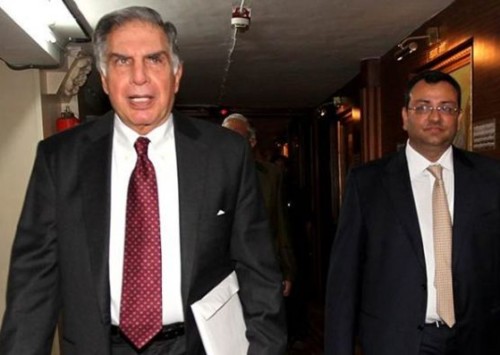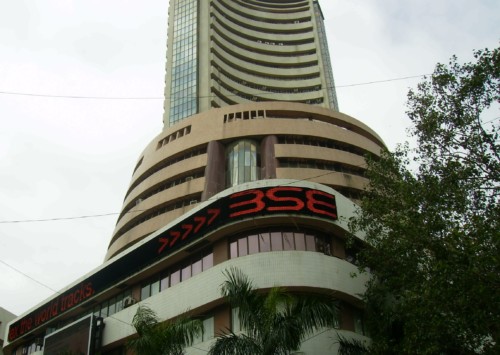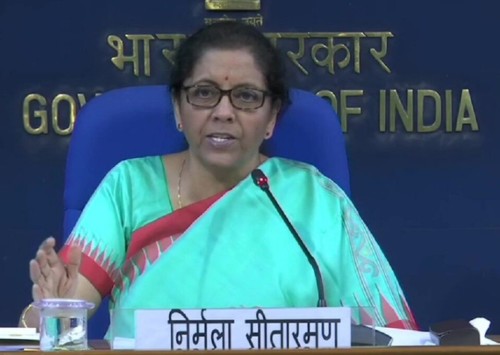Taking stock: Disconnect between Indian bourses & economy
Sensex continues to scale new all-time highs, while the economy plumbs to long-time lows. The disconnect between the markets and the economy seems total and unprecedented.
Every day of this week, Sensex, the benchmark index of the Bombay Stock Exchange has been breaching yet another record high. The market seems to have shrugged off the data that showed the economy to be growing at its slowest in almost a decade, with the current fiscal expected to clock less than 5 pc growth in the GDP.
Reports that Indian economy had grown at barely 4.5 pc in the second quarter of the current fiscal, the slowest growth in over six years, do not seem to have bothered the stock markets at all. Neither are the bourses worried about the sharp rise in government’s fiscal deficit, which has already breached the whole year target of 3.9 pc in the first six months of the fiscal year. And removing the cushioning effect of the handout of INR 1.5 trillion (USD 21 billion) that the government forced the Reserve Bank of India to hand over, the actual deficit would be close to a monumental 7.2 pc.
Other economic indicators are as poor, if not poorer. Investment, notably private investment, has all but evaporated, despite claims to the contrary by the government, credit growth is at lowest levels in years, private consumption has declined for the first time in over 40 years and unemployment continues to soar. On none of the key parameter scan one be optimist about the fate of the economy for several months to come, while it would take years for the situation to become normal and the economy to grow in a sustained fashion at 8 pc or more as is needed.
Despite these indicators of a deep-rooted malaise in the economy, the Indian bourses have been roaring ahead all through the year as if the economy was in the pink of health and all was hunky-dory with the country. As a result, Indian stocks are today amongst the priciest in the world, at least in terms of the PE ratios that reflect the price of the stock as a proportion of the earning per share recorded by the company.
The PE, one of the most reliable manner to evaluate the health of the stock market and the potential of rise in prices, in India has been rising more or less consistently for several years. In January 2014, before the elections that brought Narendra Modi as the Prime Minister, the PE of NSE 50 stocks stood at 18.69. The year ended with PE at 21.16 and subsequently each year, the PE has kept on rising. Even in 2016, despite the disastrous misadventure of demonetisation, the stock markets rose, with the PE standing at 21.93 and the following year, notwithstanding the mismanaged implementation of the Goods & Services Tax (GST) that managed to derail the economy, the stock markets rose again and the PE shot up to 26.92 and this year it is now close to 29, while the PE speer markets struggle to cross even the 18 mark.
A shallow market
One of the most worrying signs in the Indian bourses is the shallowness of the market as too many investors seem to be chasing too few stocks that can promise some growth, even as most companies have struggled with their bottom lines and some even with the top lines. Hence, investors have seen a concentration in the herd mentality. While the PE of the top 50 stocks that make NSE50 has risen sharply, not every stock has kept pace. In fact, most of the price rise has come in a handful of very large companies. For instance, even this year, only eight stocks that form part of the 30-strong Sensex of the Bombay Stock Exchange have risen by over 20 pc in value, while the mid cap and small cap stocks have actually declined in value. Many of the stocks today are as expensive as in 2008, just before the global financial meltdown occurred.
Even though the markets are meant to look at future growth and the potential, the scenario for the foreseeable future is anything but rosy. The corporate earnings growth will continue to be lukewarm or worse. The extreme slowdown in many areas and unprecedented for some sectors means that from automobiles to soaps and from electronic goods to garments, companies are not expected to post handsome jumps in their profits to justify in any manner the current pricing of the stocks. Though the cut corporate tax rates would help boost companies’ profitability, this would be a one-time effect and hence has already worn off as the stock prices reflect these.
Though the government has announced massive spending in infrastructure, the actual money has not been allocated, leave alone spending on the ground having started in order to provide a boost to the economy. The few factors that could actually justify the rise in stock prices is that investors have apetite for little else currently. The real estate market is down, wracked by bad debts and weak demand. Interest rates are too soft to have any investor excited and globally there is an excess of liquidity due to the continued injection of liquidity by the central banks in various economies around world as a counter to the slowdown.
This has seen foreign portfolio investors seek the markets with higher potential of growth, such as India. Already this year, the institutional investors have pumped in over USD 13 billion in the Indian bourses and as most of this money has been pumped into the handful of strong stocks, it has pushed their prices to the skies. The domestic investors – retail as well as institutional – too have followed a similar strategy.
Despite the demand-supply equation remaining strong in favour of Indian stocks, in the absence of any quick turnaround in the economy, the bourses are certainly building up yet another bubble, which may collapse in the months ahead as the economy continues to struggle and politically the government is forced to either go slow on reforms or go even more populist to win in the key elections that lie ahead.













